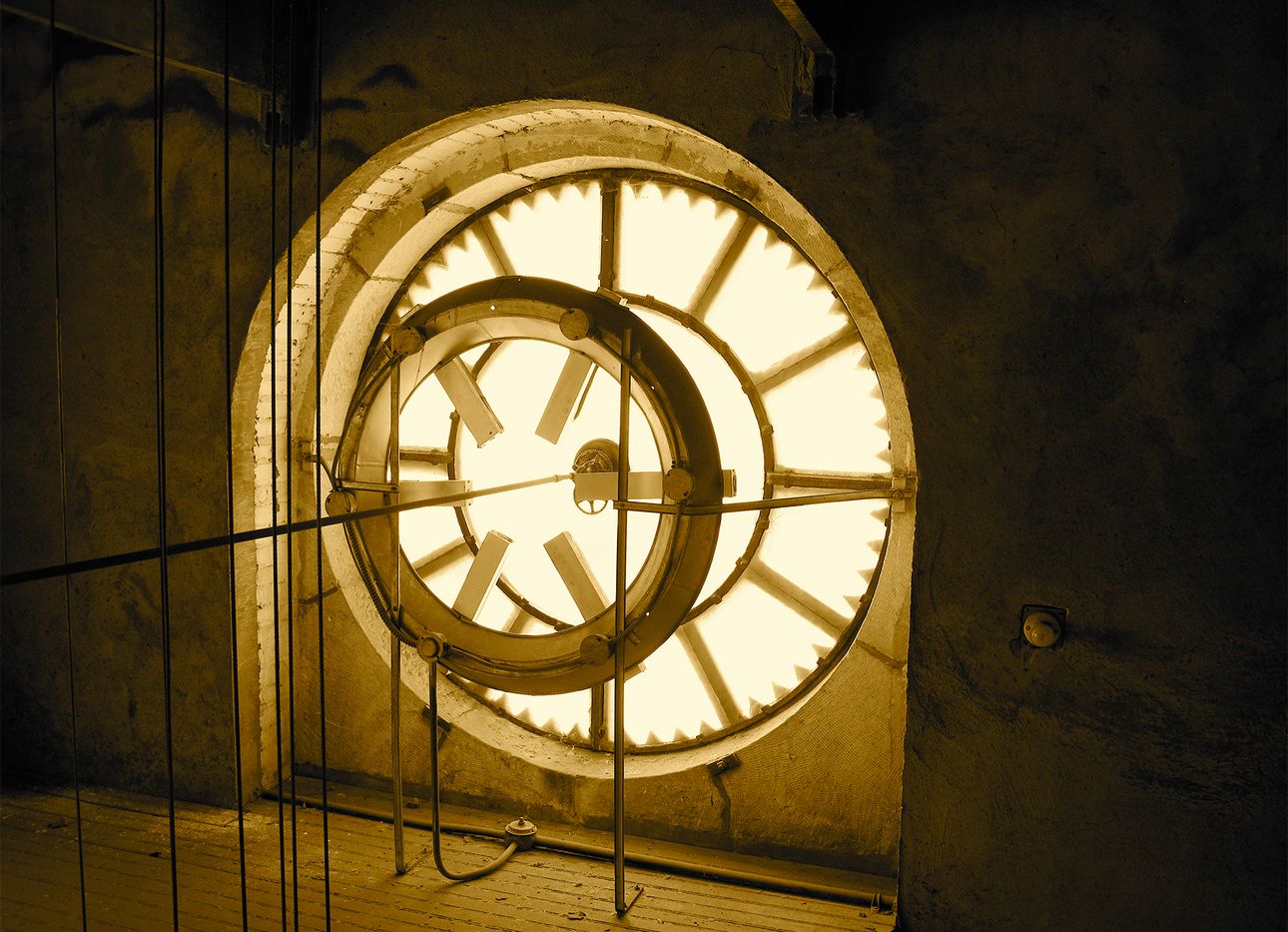
An Unsettling Sound Installation Blasts Cold, Hard Facts Into Downtown San Jose
Artist Trevor Paglen has a talent for visualizing the invisible. He has photographed top-secret drones and bases used by the military, gone on scuba-diving expeditions to locate undersea cables owned by the N.S.A., and created a viral art project that exposed the racist and sexist biases in one of the world’s leading image databases. (Paglen recently discussed these and other undertakings, as well as his lifelong interest in perception, on Ep. 49 of our Time Sensitive podcast.) Each piece encourages viewers to ponder the unseen, often disturbing realities that quietly shape our everyday lives.
Paglen’s latest project continues in this vein by exposing truths through sound. Opening this week, “There Will Come Soft Rains” (on view Nov. 5, 2021, through Nov. 6, 2022) will project its aural arrangements from inside the San Jose Museum of Art’s historic clock tower. The composition is part of the California institution’s ongoing Beta Space program, which commissions artists to experiment with new methods and materials, and exhibits the results.
Paglen’s sound installation consists entirely of spoken words. In 45-second spans, at various times throughout each day, a voice synthesizer recites real-time updates beginning with the weather and time. It then delivers current data from authoritative organizations, including satellite navigation systems, the United Nation’s critically endangered species list, and the California Department of Forestry and Fire Protection. Loud and monotone, the sonic information emanates throughout downtown San Jose, abruptly projecting cold, hard facts into the ears of people who are simply going about their days.
The audible artwork—located within 20 miles or so from the corporate headquarters of Apple, Google, and other tech giants—seems to be Paglen’s way of spotlighting the roles that sound plays in framing time and certain actualities, and of questioning the trustworthiness of information gleaned through audio today. “When this clock was built, in 1908, it represented a kind of public truth—time was a social pact that we agreed on,” Paglen said in a statement. “The past year has underlined a shift in my conception of time, which no longer feels like a progressive march into the future, but rather, a perpetual sense of loss. This project explores time as marked by what used to be and no longer is, and what it means to be living against that backdrop when the idea of shared knowledge, or facts, is increasingly elusive.” By blasting certainties into the city’s streets, Paglen underscores the importance of veracity, and provides a moment for listeners to meditate on time, truth, and what it means to exist with an awareness of both.